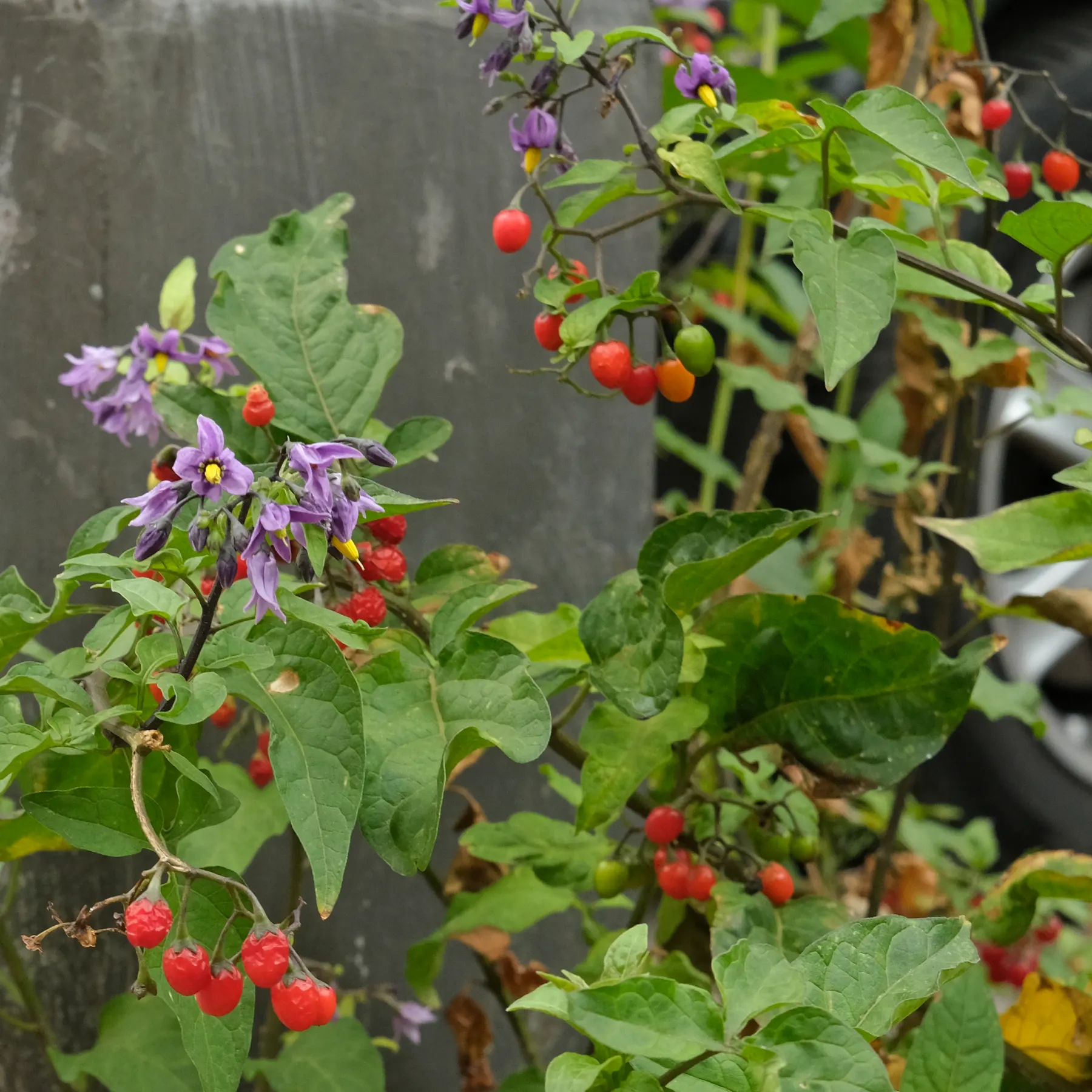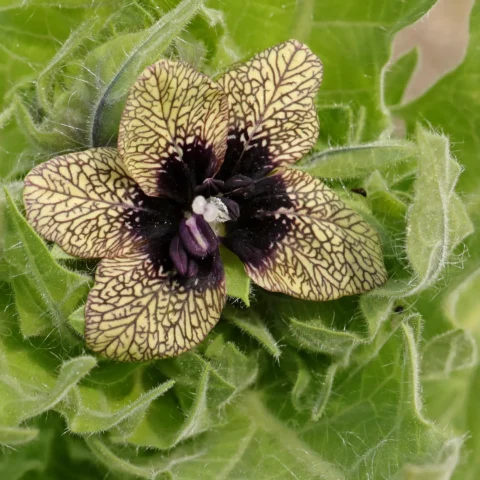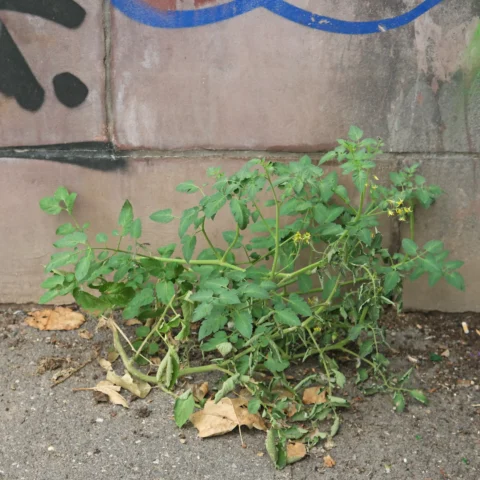Solanum dulcamara is a perennial climbing semi-shrub. Its shoots can grow several meters long and are woody at the base.
This member of the nightshade family has many popular names. It is most often called Bittersweet or Bittersweet Nightshade. But also Bitter Nightshade, Climbing Nightshade, Woody Nightshade or just Dulcamara (Source).

The flowering season can last from the beginning of summer to the end of fall. It spreads by seed and runners. All parts of the plant are toxic.
Solanum dulcamara grows in a variety of habitats including bushes, fences, banks, woods, and even roadsides where young plants can be found.

In urban areas, Bittersweet is not quite as common as its black-fruited relative, Black Nightshade (Solanum nigrum). It differs not only in its red berries, but also in its purple flowers.

Its natural range includes Europe, North Africa and Asia, extending as far as the Indian subcontinent. As an ornamental plant, it also reached other regions and became native there.

Solanum dulcamara is occasionally planted as an ornamental in parks and gardens.



 Black Henbane
Black Henbane Black Nightshade, Blackberry Nightshade
Black Nightshade, Blackberry Nightshade Thorn Apple
Thorn Apple Urban Nightshades
Urban Nightshades